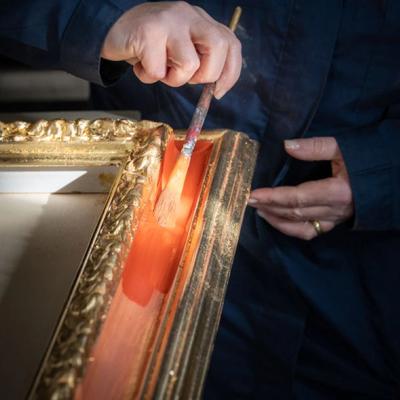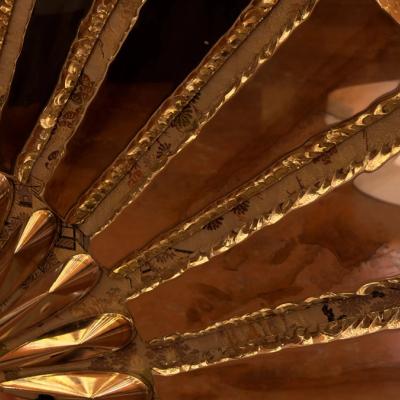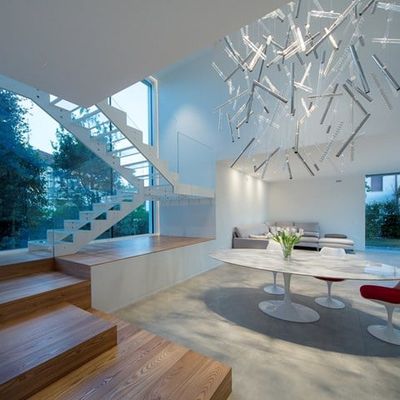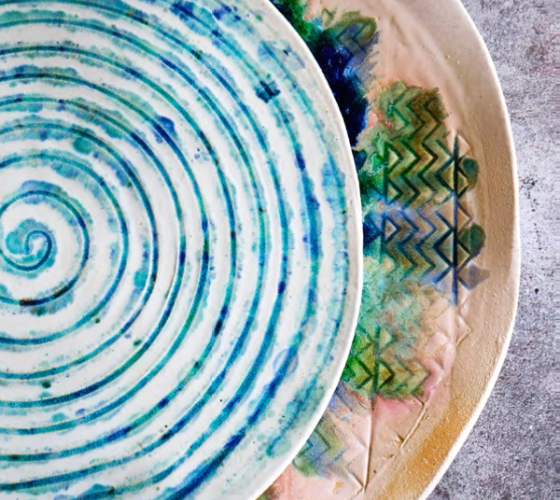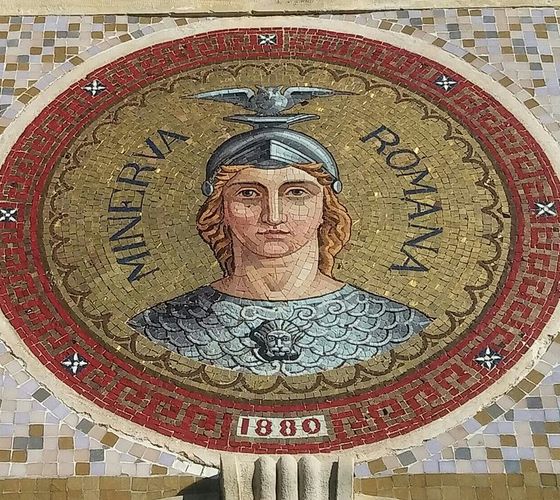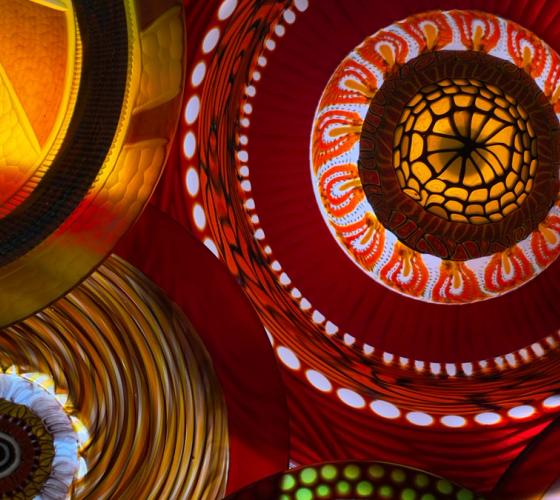
The Fourth Dimension of Glass: Light Permeability in Livio Seguso’s Vision
The Magic of Glass and Light
Glass has been an essential element in interior design for centuries, not just for its beauty but for its ability to play with light and space. No one understood this better than the great Venetian glass master Livio Seguso, who famously spoke about the "fourth dimension" of glass—the permeability of light. In this article, we will explore the profound relationship between glass and light, the advantages of using glass in interior spaces, and how Italianicity collaborates with master glassmakers to honor Seguso’s legacy and vision.
Livio Seguso’s Vision: The Fourth Dimension of Glass
Livio Seguso, one of the pioneers of contemporary glass art, believed that glass was more than just a medium—it was a way to manipulate and capture light itself. For Seguso, glass had a "fourth dimension," one that transcended its physical form. This fourth dimension was light permeability, a quality that allowed glass to shift and transform as light passed through it, creating ever-changing reflections, refractions, and shadows. Seguso’s vision elevated glass from a static material to a dynamic element of art and design.
The Role of Glass in Interior Spaces
Glass, unlike other materials, offers a unique ability to interact with its surroundings. Its transparency, translucency, and reflectivity make it a versatile choice for interior spaces, particularly in luxury interior design. Here are some key advantages of incorporating glass into interiors:
- Light Manipulation: Glass, with its ability to let light through, can completely transform a room by enhancing natural light or creating sophisticated artificial lighting effects. This quality creates a sense of openness and flow within spaces, making them appear larger and more inviting.
- Aesthetic Flexibility: Glass can be molded, colored, or shaped into virtually any form, allowing for endless design possibilities. Whether it's large panes of crystal-clear glass for a minimalist look, or intricate colored glass installations, the material offers unmatched aesthetic flexibility.
- Sustainability: As more architects and designers focus on eco-friendly materials, glass stands out for its recyclability and energy-saving potential. Glass can be used in windows to regulate thermal energy, reducing the need for artificial heating and cooling.
Glass and Light: A Symbiotic Relationship
At the core of Seguso's philosophy lies the relationship between glass and light. Glass doesn’t just reflect or refract light—it transforms it. In spaces, glass objects or installations create a living interaction with light, casting playful shadows or refracted beams that change throughout the day. This unique relationship between glass and light gives interior spaces a living, breathing quality that few other materials can offer.
- Transparency and Translucency: Depending on its composition, glass can be either completely transparent or partially opaque, controlling the amount of light that permeates. Transparent glass allows full light transmission, making spaces brighter and more open, while translucent glass diffuses light softly, creating intimate, warm atmospheres.
- Reflectivity: Glass surfaces can reflect light, adding depth and dimension to a room. In luxury interiors, this feature is often used to create a mirrored effect, expanding visual space and enhancing the grandeur of a room.
- Color and Mood: Colored glass or stained glass installations play with light in unique ways, altering its hue and intensity. This allows designers to create moods and atmospheres that shift as natural light changes throughout the day.
The Great Masters of Glass: A Legacy of Innovation
Livio Seguso is not the only master who has shaped the history of glassmaking. Venetian glass has a storied past, with a tradition that dates back to the 13th century. Masters from the island of Murano have pioneered techniques like glassblowing, millefiori, and filigree that are still used today.
- Carlo Scarpa: Another great innovator, Carlo Scarpa, brought a modernist approach to glass, combining Venetian tradition with contemporary design elements. His work exemplifies the harmonious blend of artistry and function.
- Paolo Venini: Venini’s name is synonymous with Murano’s avant-garde. He was one of the key figures who introduced modern art into glass design, making it a cornerstone of 20th-century Italian art.
- Ermanno Nason: A pivotal figure in Murano glassmaking, Ermanno Nason was known for his bold, expressive sculptures and technical expertise. His work pushed the boundaries of what was possible with glass, blending traditional Murano techniques with avant-garde design sensibilities.
- Pino Signoretto: A legendary figure in the world of glass sculpture, Signoretto was renowned for his mastery of glassblowing and his ability to create large-scale, intricate works. His technical skill and creativity earned him collaborations with artists and architects worldwide.
Italianicity and the Craft of Glass: Honoring Livio Seguso’s Legacy
Italianicity has always prided itself on working closely with Italy’s finest artisans, particularly those from Murano. The collaboration with local furnaces allows us to create bespoke glass pieces that respect tradition while pushing the boundaries of design. Just as Livio Seguso sought to honor the symbiotic relationship between glass and light, Italianicity works to integrate this vision into modern interior spaces.
Collaboration with the Furnaces
By working directly with the glass furnaces of Murano, Italianicity ensures that each piece is made by hand, using time-honored techniques that have been passed down through generations. This partnership enables us to offer truly unique, handcrafted items that reflect both the beauty of glass and its dynamic relationship with light.
- Bespoke Creations: Every project is an opportunity to create something entirely bespoke. Whether for luxury homes or grand public spaces, Italianicity works with designers and clients to create glass installations that honor the principles of Livio Seguso’s vision of light permeability.
- Sustainability and Artistry: Like Seguso, we believe in the timeless quality of glass. Our pieces are not just functional but artistic, creating long-lasting value for the spaces they inhabit. And with glass’s natural sustainability, our work contributes to environmentally conscious design practices.
Bringing the Fourth Dimension to Life
Livio Seguso’s belief in the "fourth dimension" of glass—the permeability of light—continues to inspire artists and designers today. Glass is not merely a static material; it is dynamic, alive with the interplay of light and space. Through Italianicity’s collaboration with Murano’s master glassmakers, we continue to honor this legacy, bringing bespoke glass creations into modern luxury interiors. With each piece, we invite light to permeate, to transform, and to breathe life into the spaces they adorn.
